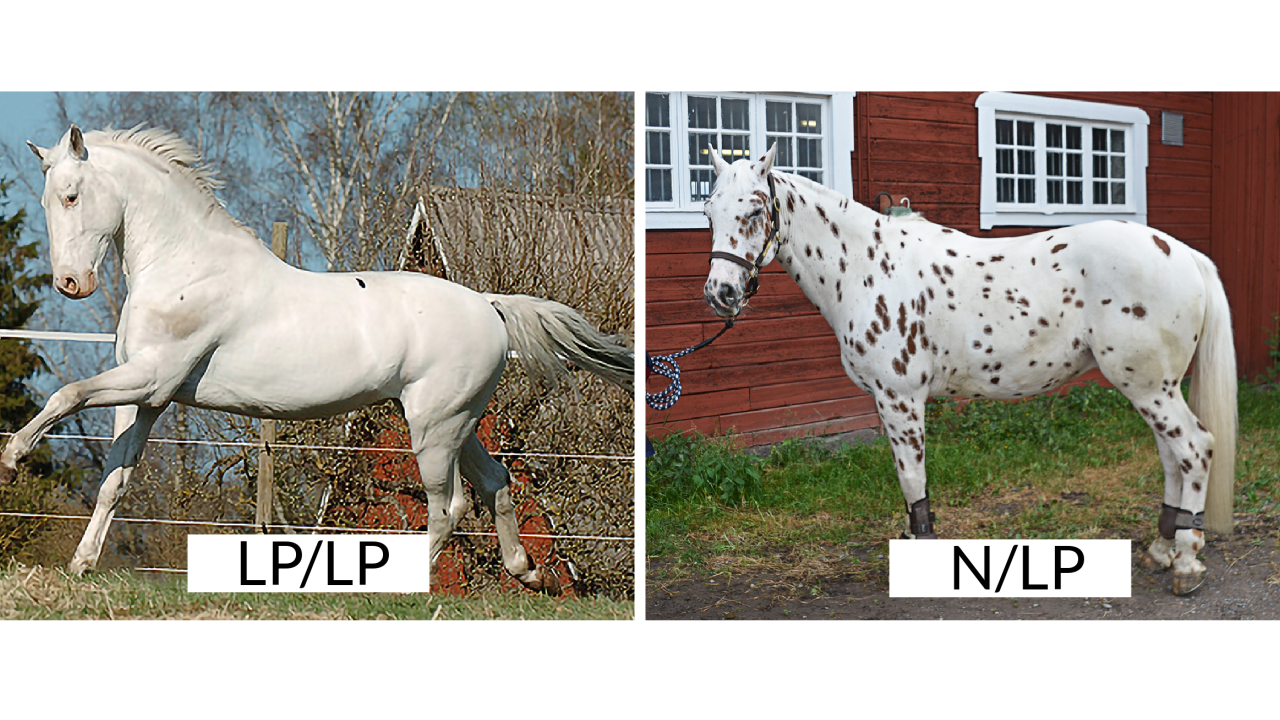
VGL Research identify risk factors for insidious uveitis in Knabstrupper horses
A study conducted by an international team of researchers led by VGL director, Dr. Rebecca Bellone, and with research performed by recent VGL Ph.D. recipient Nicole Kingsley, found that age and homozygosity for the leopard complex spotting allele (LP) are risk factors for insidious uveitis in the Knabstrupper horse. Genotyping for LP is, therefore, useful to assess risk and help inform clinical evaluations of equine recurrent uveitis in this breed.
Equine Recurrent Uveitis (ERU) is an inflammatory disease of the eye and the leading cause of blindness in horses. Similar to the Appaloosa horses, this study determined the Knabstrupper horse to also be predisposed to insidious uveitis. Horses with insidious uveitis do not typically present with outward painful episodes but they have persistent inflammation that can cause damage to the eye. The Knabstrupper is also similar to the Appaloosa in that both have been selected for the leopard complex spotting pattern.
The study examined 116 Knabstrupper horses from Denmark, Sweden and the Unites States. Of those, 24 were diagnosed with ERU, which is similar to the previously reported 14% prevalence seen in Appaloosas. Also similar to what is seen in the Appaloosa, the most common clinical signs in affected Knabstrupper horses included cloudy ocular fluids, changes in iris color, redness of the eye, constricted pupils, cataract, and atrophy of the iris tissues. Approximately 42% of the affected horses in this study were blind from this disease.
Dr. Lynne Sandmeyer, a veterinary ophthalmologist and one of the first authors of this study, states
This study determined that uveitis in the Knabstrupper is similar to that of the Appaloosa. This is important knowledge to share given insidious uveitis was found to be a high prevalence in the horses we examined and homozygosity for LP is a risk factor. Because of its insidious nature in the breed, it is often not noticed until late in the disease process when animals are blind or in pain. The more we can learn about the condition, the better chance we have to reduce its incidence in the future."
Researchers recommend that more frequent examinations for ERU be done on Knabstrupper horses that are LP/LP and are between the ages of 11–20 years old, and on N/LP horses that are 16–20 years.
The study was supported by funding from the Knabstrupperforeningen for Danmark, the UC Davis Center for Equine Health (#18-17) and the Morris Animal Foundation (D16EQ-028).
For the full publication visit https://doi.org/10.1111/evj.13879
